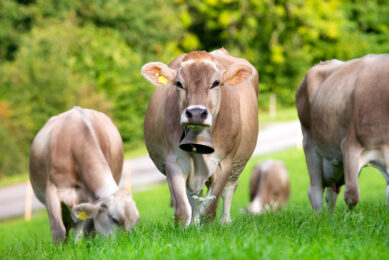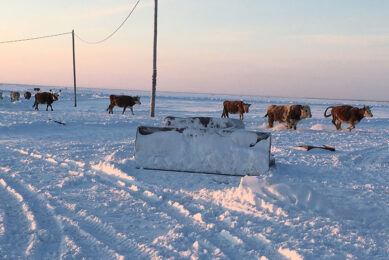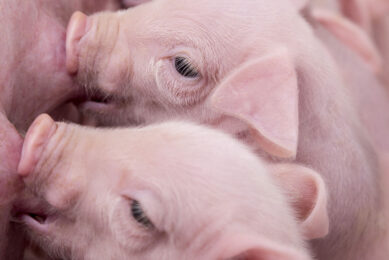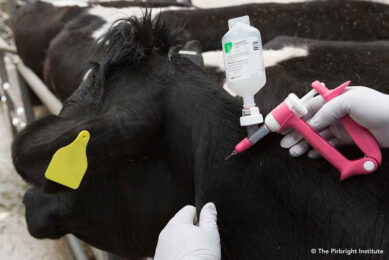Lameness: Continue monitoring and fast action
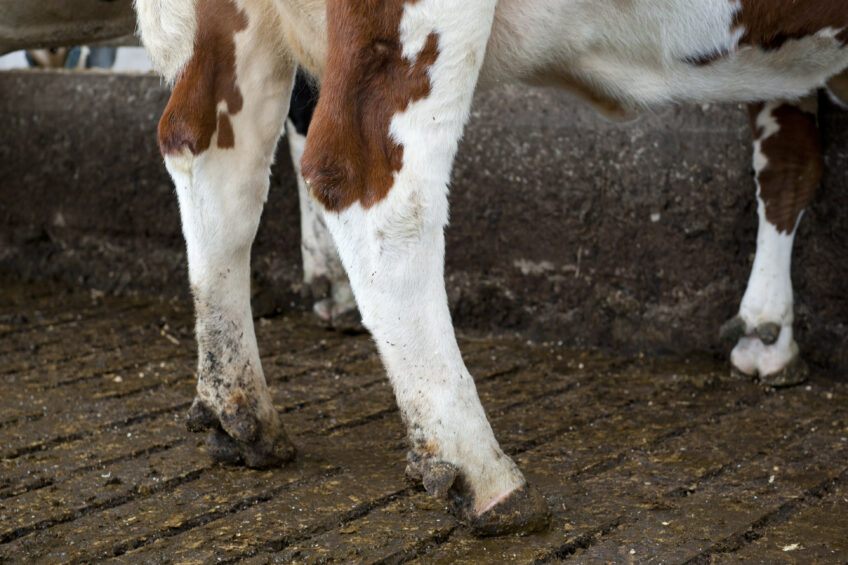
Creating a ‘lameness advocate’ who is tasked with monitoring and identifying lameness is key to successfully driving out the condition from dairy herds, according to an expert in the disease.
Digital dermatitis (lameness) is widespread in dairy cows kept in loose housing systems and represents one of the three major causes for early culling. Highly infectious, digital dermatitis usually affects the skin on the bulbs of the heel. It is caused by contact with slurry, and is more prevalent in housed cows with poor hygiene and wet conditions. The disease presents as lesions which vary in severity from a few matted hairs up to a black lesion, which is as a scab over damaged skin. As it thrives in damp, dirty conditions, it’s important to keep passageways clean and to minimise cow contact with slurry.

Stock coming onto the farm should be treated and kept separate for two weeks before being footbathed again before they join the existing herd. One of the most common causes of lameness (white line disease) is the separation of the wall horn from the sole in the white line region. Almost all cases occur in the back foot, with 80% in the outer hind claw. Sole ulcers occur when structures in the hoof supporting the pedal bone weaken. The bone can then sink, causing damage to the horn-producing tissue beneath. As the sole wears away, the damaged cord is exposed, leading to the development of ulcers.
Act quickly, reduce severeness
Stopping both issues from occurring relies on feeding a well-balanced diet, ensuring good quality tracks and standing areas, and providing adequate lying areas, particularly in terms of cubicle space. Gerard Cramer, associate professor in veterinary medicine at the University of Minnesota, says delays in spotting and treating lameness means that the condition is far more prevalent than it should be. But by training individual staff to identify lame cows and give them the responsibility for monitoring the herd, it is possible to cure cattle quickly and reduce the prevalence of the condition in herds. “Lameness is a world-wide problem affecting 20-30% of cows,” Professor Cramer says.
“Typically 40% of those have hoof lesions, with digital dermatitis being the most common, followed by hoof horn lesions including white line disease and sole ulcers.” The biggest problem, he says, not necessarily the number of cows with the disease, but the length of time cows suffer with symptoms before they are spotted. And that delay in treatment can cause significant long-term issues. “The standard way of identifying lameness is through mobility scoring, but the problem with mobility scoring is that it’s all about the personal approach,” he says. Some people will be better at spotting signs than others, while busy parlour staff might be too distracted by other jobs to notice lame cows in the early stages of disease.

Moving to easier detection system
In a bid to address the problem, Prof Cramer and his colleagues analysed the effectiveness of different ways to spot lameness, including traditional locomotive scoring as well as headlock scoring. “We realised that cows are in a headlock each day, whether for breeding or for fresh cow checks, so we wanted to make use of that time by using a headlock scoring system,” he says. By separating the cows into separate pens and checking them at three and six weeks, they discovered that cows were 1.5 times more likely to be cured using headlock scoring systems than by using locomotion scoring. “With the headlock system, you are looking at how cows are standing,” Prof Cramer says.
“Most lameness occurs in the back, and front foot lameness is usually very visible, so by playing the odds and focusing on how they shift their weight it can help with detection. It’s not perfect, but it is moving towards an easier system,” he adds. “The key is to find a way to look for lameness, no matter what you do.” With that in mind, Prof Cramer says it is worth identifying someone on farm whose role it is to identify lameness. “Paying people to stand and watch cattle is something that will be a barrier for many farmers, but it’s a perception that we need to change,” he says. “To get lameness out of a system, someone needs to take ownership, whether that’s the vet, the consultant or someone else on the farm. “We know enough to be able to fix lameness in every dairy, it’s the swift implementation of treatment that’s lacking.”
How to treat affected claws
Once identification has been sorted, the second part of the challenge is to change how lameness issues are treated, Prof Cramer says. “Some 60% of North American vets use topical treatments on claw horn lesions,” he says. “The problem with that is they can actually delay healing, and their caustic properties can actually damage tissue further.” A much better alternative is to clean the lesion then apply a block to the unaffected claw, however it is important to make sure the block is an appropriate size. “Larger blocks which extend beyond the weight-bearing surface of the heel are better,” he says.
“The majority of lesions happen at the centre of the foot, and while a standard block will still allow it to heal, one with a larger surface area reduces pressure on the soft heel horn during heel strike, allowing for faster repair and less chance of damage.” In most situations blocks should be about 13-16cm long, and should be left on for at least four to six weeks for healing, he says. Leaving a block on for too long can cause sole ulcers on what was initially unaffected hoof due to excessive weight bearing. To prevent new cases of lameness from appearing it is important hooves are trimmed, however farmers should be aware that different models have different outcomes, Prof Cramer adds.
In a study (Table 1) comparing big modelling (leaving 18mm unmodelled around the hoof edge) and little modelling (leaving 42mm unmodelled) carried out on dried-off cows, researchers in Prof Cramer’s team found that big models resulted in 29% fewer lesions than little ones. Results also showed that by carrying out a big model at the end of the first lactation, there was a 70% less chance of hoof horn lesions in the second lactation, compared to those with a little model. “Attention to feet in the first lactation is therefore essential in reducing lameness in subsequent lactations,” Prof Cramer adds. “If you can combine that with continued monitoring, asking yourself questions about lameness levels on your farm, and fast action, you should be able to keep lameness prevalence low.”
Join 13,000+ subscribers
Subscribe to our newsletter to stay updated about all the need-to-know content in the dairy sector, two times a week.



